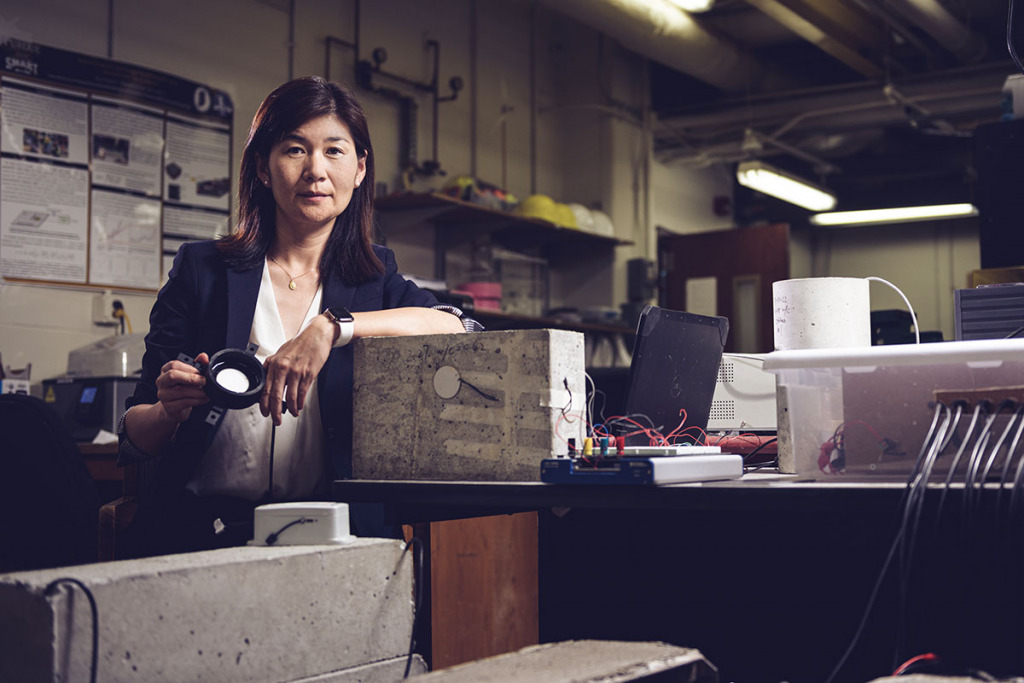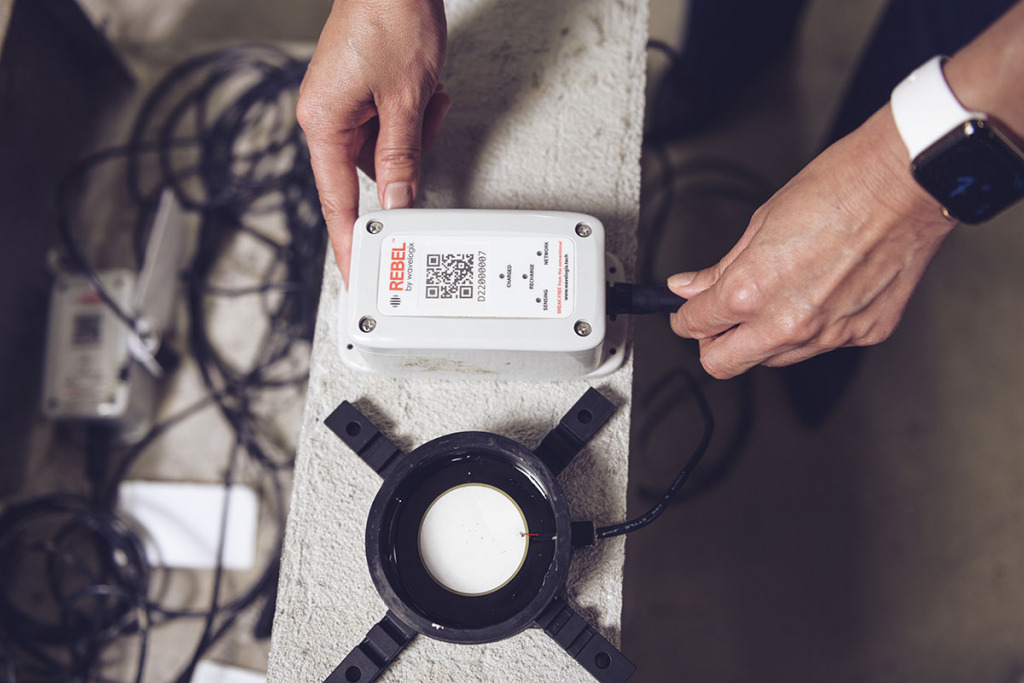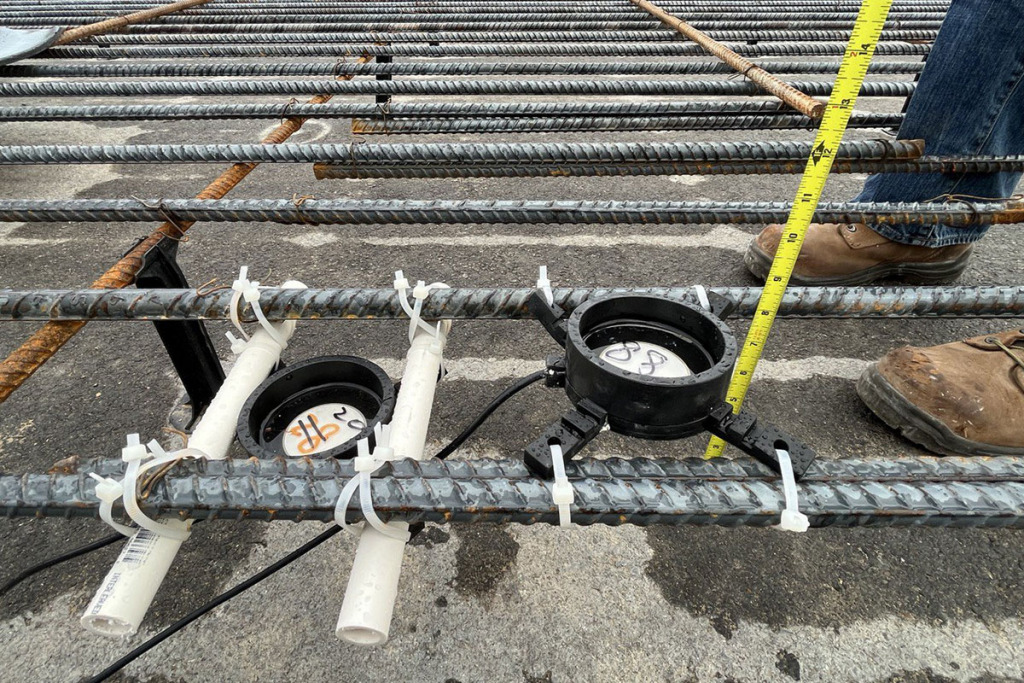Subscriber Benefit
As a subscriber you can listen to articles at work, in the car, or while you work out. Subscribe NowOn the surface, the career path chosen by Luna Lu, an associate professor of civil engineering in Purdue University’s Lyles School of Civil Engineering, doesn’t sound all that exciting.
Lu devotes herself to studying concrete—a product that’s been used for large-scale construction since Roman times and is still mixed, poured and cast using techniques the Colosseum’s builders would recognize.
What, exactly, is left to know at this point? Turns out, quite a bit.
Lu has made an international name for herself by creating potentially game-changing iterations of one of the world’s oldest construction staples.
She and her team are working on (among other things) self-healing concrete that can seal small surface fissures before they grow larger, and road concrete that uses its own internal heat, plus the vibrations of passing vehicles, to generate enough electricity to power nearby streetlights and traffic signals.
Her group is also one of a handful of organizations worldwide dabbling in how to commercialize “smart concrete.”
Lu’s version of sensor-embedded smart concrete can monitor its own strengths and weaknesses and report them to engineers via cellphone. Lu said the technology is in widespread testing and that a beta product is only months away.
“I can’t imagine how big this technology could be in five years,” Lu said.
She’s not the only one.
“The hardware and the signal technology have improved to the point where this technology is really gaining a lot of traction,” said Don Marsh, editor of Concrete Products magazine. “There’s the promise of labor and material savings because the amount of concrete used can be optimized. That’s why many transportation agencies and other major concrete users are taking note of this.”
INDOT research project
Lu’s work in the field began quite modestly, when, in 2017, the Indiana Department of Transportation asked her team to find a way to reduce the amount of time a freshly patched concrete road had to remain closed to traffic. Open the road too early, before the concrete is fully cured, and you risk damaging the pavement. Wait too long, and you cause unnecessary traffic snarls.
“Being able to better pinpoint concrete strength allows INDOT to open lanes to traffic at the appropriate time, without risk to the concrete or causing traffic backups by leaving restrictions in place longer than what may be necessary,” said Tommy E. Nantung, INDOT’s manager of research.
Until now, picking an opening date for a patched section of road was basically an educated guess. It’s extremely difficult to assess a concrete slab’s internal state once the mixture has been poured. Lu and her team addressed that problem by developing hardy electronic sensors that can be embedded in the concrete and can report on everything from its strength to the rate at which it cures.
It didn’t take long to realize this sort of information-gathering technology could be a boon to civil engineers—and a potential “killer app” that could make smart concrete a very sought-after product.
Lu said civil engineers often have only the vaguest idea of how long it takes the concrete used in a particular project to reach full strength, and whether an older concrete structure is still structurally sound or hiding dangerous internal damage.
Their educated guesses rely, to an alarming degree, on a testing method pioneered in the 1820s. If one wants to, say, test the strength of the concrete used in a new bridge, the accepted method is to pour “cylinders” using the same concrete employed on the job. The cylinders, once hardened, are then tested to failure in a lab. This gives a rough estimate of how much punishment a structure can take.
Since the process is far from exact, bridges, out of an abundance of caution, are typically vastly overbuilt. This uses much more concrete than is necessary. And that grinds Lu’s gears.
“I really hate that we use 200-year-old technology for testing, which is not very accurate and not consistent,” she said. “Because of it, we make so many poor decisions and waste a lot of money.”
Smart concrete’s benefits
Smart concrete could solve such problems by sending civil engineers (via their phones) precise data about a concrete pour, including how strong the concrete is and whether it’s suffered internal damage. Lu said such insights could reduce construction costs 30%, primarily by eliminating the need for extra “margin for error” concrete.
And there’s another benefit. If one viewed the worldwide concrete industry as an independent nation, it would be the planet’s third-largest CO2 contributor, after only China and the United States.
“With the technology we’re working on, we have the potential to reduce the use of cement by 20% to 25%, just by ending overbuilding,” Lu said. “That’s almost 1 billion metric tons of CO2 yearly.”
INDOT has embedded experimental, Lu-developed sensors into three interstates: I-70, I-74 and I-465 near Indianapolis. The Federal Highway Administration is also interested and is funding a study that’s testing the technology in several other states, including California, Texas, Tennessee, North Dakota and Utah.
Lu said potential customers are lining up.
“At conferences, I have people chasing me to my car after presentations,” she said. “They say, ‘Hey, when can I buy this device?’”
Her invention is being deployed by a company she founded called Wavelogix. It recently landed a six-month, $255,996 development grant from the National Science Foundation. The cash helped perfect the company’s proprietary Rebel Concrete Strength Sensors.
“We are expecting to have a beta product release by the end of this year,” Lu said.
Her invention’s greatest potential disruption could come from the massive database on the behavior of concrete that these new sensors could build—everything from how the curing process is affected by different climates to how concrete behaves when placed under real-world stress. The sensors could also be embedded in concrete buildings, opening the way to such tantalizing opportunities as real-time data on how well concrete buildings ride out earthquakes.
“The technology is still improving, but I think it is at the point, thanks to the veracity of the readings and the data that’s being extracted, where it’s approaching mainstream acceptance,” said Marsh of Concrete Products magazine.
Plenty of applications
Such advances can’t come quickly enough for the U.S. road network. According to a 2020 report by the American Road and Transportation Builders Association, more than a third of U.S. bridges need some form of repair work. According to ARTBA, 5.4% of Indiana’s 19,367 bridges are considered structurally deficient. The state has said another 13.8% are in need of repairs, work that would cost $1.4 billion.
“We’ve designed life expectancy for the sensors at around 30 years,” Lu said. “And the sensor will be embedded in the concrete forever. So, 20 years down the road, if you’re really concerned about the durability of a bridge because there’s a big crack, you can plug in, look inside the crack and see if it really needs to be repaired.”
These are busy times for Lu, who, in addition to her academic work at Purdue, is also knee-deep in helping to run Wavelogix. Though her father ran a small construction business in his native China, the world of business is still mostly terra incognita to her.
“I’m learning every single day,” Lu said. “Fundraising, talking with customers, marketing, even the packaging of the sensors and cables. The whole nine yards.”
Wavelogix currently has four employees, but it’s already farmed out manufacturing of its sensors to companies in Chicago and China and is moving toward full production.
Several other firms are also developing their own versions of smart concrete.
“I’m guessing there’s probably seven or eight companies that have some commercial application for their sensory equipment,” Marsh said.
Lu is aware of the competition but said Wavelogix’s ability to quickly distill data into usable information gives it a leg up.
“The key for us, and we don’t have any competition at this point, is our artificial-intelligence-driven algorithm,” she said. “We use the AI algorithm to interpret all the data, and that’s why we can get a very accurate measurement. That’s really the core competency of the company and those who developed the company.”
As to where the firm goes next, Lu said she sees a virtually limitless worldwide market. Billions of dollars in construction costs could be saved, and a vital, utterly unprecedented database could be compiled that shows how concrete performs, long term, in hundreds of environments. Also (and this is of great importance to Lu), cylinder testing could finally be consigned to the dustbin of history.
“I would like this to become a mainstream technology, and I would like it to replace cylinder testing and change how we currently design and build,” she said. “Revenue-wise, I think once this technology is adopted nationwide or worldwide, the number is probably astronomical. It’s hard for me to comprehend.”•
Please enable JavaScript to view this content.





Key quote from Prof. Lu: “I really hate that we use 200-year-old technology for testing, which is not very accurate and not consistent,” she said. “Because of it, we make so many poor decisions and waste a lot of money.”
The reliance on centuries-old technologies is the reason we face massive challenges in dealing with climate change and other problems: e.g., the reliance on coal, the internal-combustion engine, etc.
Bravo to Prof. Lu and her team for their innovative thinking.
This is astounding and could be a game changer. But concrete is expected to last far longer than the 30-year useful life of the sensors so that seems to be a significant limitation.